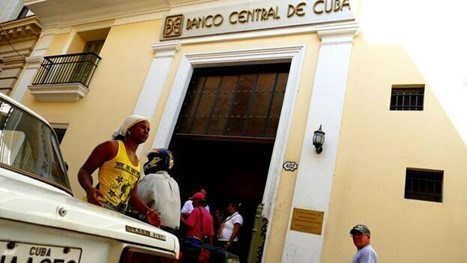The London Trial’s Verdict on Cuba’s Debt, First Effects

By Elías Amor Bravo (14ymedio)
HAVANA TIMES – On January 23, a trial began in the British High Court of Justice for a debt claim of the CRF I Ltd. fund (plaintiff) against the National Bank of Cuba and the Republic of Cuba (defendants). A trial that, as expected, was not going to have a quick resolution, as finally happened on April 4th, with the ruling of Judge Sara Cockerill, in charge of the trial. It took just over two months to arrive at a solid document of 94 pages, structured into 41 sections and some conclusions, and whose reading, loaded with legal technicalities as it could not be otherwise, comes to resolve, for the moment, the judicial matter related to a sovereign debt claim.
Rivers of ink have led to this conclusion of the trial, which is expected to become a precedent, and which is interpreted as a win by both parties.
For Cuba, because it will not have to face payment of the debt, at least for the moment. It is already established that CRF is not a creditor of the Cuban state but of the BNC, which means that the Republic of Cuba is out of the lawsuit. From now on, the trial will continue only against the BNC, which will have the right to establish the defense allowed by English law.
For CRF I, because it is not qualified as a “vulture fund,” and the court accepts its ownership of the debt and its status as a legitimate creditor, as well as the conditions under which the entire financial operation has been developed.
It could be assumed so far that everyone is happy and that Judge Cockerill’s decision is very Solomonic, but that’s not the case. Consulted legal experts, who are able to read the contents of the sentence with a much more professional look than an economist, can reach a series of conclusions that deserve attention.
The ruling, subject to appeal, leaves both parties without achieving their main objectives. CRF I finds it difficult to collect the claimed debt; hence, a director of the entity has already offered to begin negotiations with the regime. For Cuba, the sentence represents an international slap on the wrist for terrible public management of its debt policy and an anachronistic bureaucracy that transfers responsibility to employees to prevent the damage from reaching the top.
It is true that the judge does not investigate in depth the totalitarian roots of the communist regime, and this can make him lose perspective, but he did address economic and financial issues in a comprehensive way, even with that brief historical recourse to the background of the BNC in the times of Prío Socarrás [President of Cuba, 1948-1952].
No one should see in the ruling a document critical of the management of the regime prepared by the democratic opposition. It is a text of an independent judicial ruling that shows the complex mechanisms and bureaucratic tangle with which the Cuban communist regime attends to its financial affairs. First conclusion: it does not seem that the list of investors in Cuba is going to increase.
In addition to the breaches of the debt service, the algorithms of international analysts will be nourished by the information from this ruling, and the Havana regime, no matter how much its spokespeople say, is going to be demoted as a recipient of investments and loans.
The international image of terrible managers, corrupt practices and falsifying ownership of credit institutions to avoid lawsuits which derives from the ruling, should worry the regime, because it entails loss of credibility and trust and will make it even more difficult to access the international financial markets. The proximity to the closing off of credits is more than real. What will probably happen, since the parties have not achieved their objectives, is that they will appeal the ruling and prolong the trial.
In fact, a careful reading of the judgment guides the plaintiff (and many others) how to approach the claim to collect the debt, but the regime has some tranquility in the short term and is allowed to present the result as a triumph.
That is why I agree with my colleague Emilio Morales when he points out that in any judgment about the debt of the Cuban regime, the mechanism of transferring that debt from one entity to another has to be analyzed. That analysis is essential to “determine whether Havana’s assets are today in tax havens or in the hands of foreign entities that could be sued.” He adds, “the genesis of this conflict is to determine how they they were able to remove those assets from the BNC and transfer them to the BCC. There was an act of bad faith in the 90s when dividing the bank.” On these issues, Judge Cockerrill did not want to get involved.
And one last observation. The regime announced last January that the Superintendency of the Central Bank of Cuba, as a technical body with autonomy for the exercise of its functions assigned by the law related to the inspection, surveillance and control over the institutions that carry out financial and banking activity in the country, would be “in charge of reporting the results of the trial in a timely manner.” That has not happened. Instead, a Cuban television journalist has assumed that role. Even in their statements they contradict each other. Our nerves are on edge.
Translation by Regina Anavy for Translating Cuba





